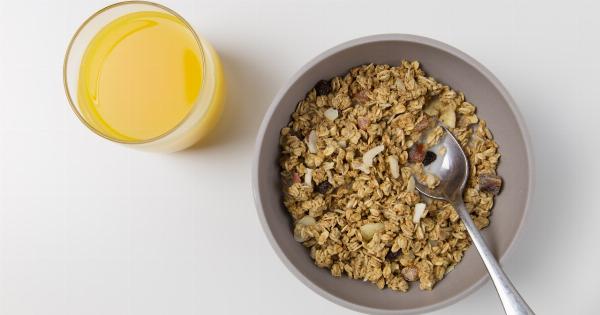Fiber is an important part of a healthy diet. It is a type of carbohydrate found in plant foods that our bodies cannot digest. Instead, it travels through our digestive system, providing numerous health benefits along the way.
What is fiber?
There are two types of fiber: soluble and insoluble.
Soluble fiber dissolves in water and forms a gel-like substance in our digestive system. It is found in foods such as oats, beans, peas, fruits, and vegetables.
Insoluble fiber does not dissolve in water. It adds bulk to our stools and helps to move waste through our digestive system. Insoluble fiber is found in foods such as whole grains, nuts, and seeds.
Health benefits of fiber
Eating a diet high in fiber has numerous health benefits, including reducing the risk for certain diseases and conditions.
1. Reduced risk of heart disease
Several studies have shown that a high fiber diet can reduce the risk of heart disease. Soluble fiber has been shown to lower LDL (bad) cholesterol levels, which can help to reduce the risk of heart disease.
Foods that are rich in soluble fiber include oats, barley, beans, and some fruits and vegetables.
2. Lowered risk of Type 2 Diabetes
A diet high in fiber can also reduce the risk of Type 2 Diabetes. Soluble fiber can help to control blood sugar levels, which is important for people with diabetes. Foods that are rich in soluble fiber include oats, barley, and legumes.
3. Improved digestive health
Fiber is important for digestive health. Insoluble fiber adds bulk to our stools, which helps to move waste through our digestive system and prevent constipation. Soluble fiber can also help to prevent constipation by softening stools.
Foods that are rich in fiber include whole grains, fruits, and vegetables.
4. Reduced risk of certain cancers
A diet high in fiber has been linked to a reduced risk of certain cancers, including colon and breast cancer. Fiber can help to prevent cancer by binding to carcinogens (cancer-causing substances) and removing them from the body.
Foods that are rich in fiber include fruits, vegetables, whole grains, and legumes.
5. Weight management
Fiber can also help with weight management. Soluble fiber can help to reduce appetite by slowing down the digestion of food. Insoluble fiber adds bulk to our food, making us feel fuller for longer.
Foods that are rich in fiber can help to control our appetite and prevent overeating.
How to increase your fiber intake
The recommended daily intake of fiber is 25-30 grams for adults. However, many people do not get enough fiber in their diet. Here are some tips for increasing your fiber intake:.
1. Eat whole foods
Whole foods are foods that are in their natural state and have not been processed. These foods are often high in fiber. Examples of whole foods include fruits, vegetables, whole grains, legumes, nuts, and seeds.
2. Choose high-fiber foods
Many foods are naturally high in fiber. Choose foods that are rich in fiber, such as whole grains, fruits, and vegetables. Read food labels and choose foods that contain at least 3-5 grams of fiber per serving.
3. Add fiber to your meals
You can add fiber to your meals by sprinkling chia seeds on your yogurt, adding flaxseed to your smoothie, or topping your salad with nuts and seeds.
4. Use whole grains
Choose whole grain bread, pasta, and rice instead of highly processed versions. Whole grains are higher in fiber than their processed counterparts.
Conclusion
Fiber is an important part of a healthy diet. It has numerous health benefits, including reducing the risk for certain diseases and conditions.
If you are not getting enough fiber in your diet, try adding more whole foods, high-fiber foods, and whole grains to your meals. Your body will thank you!.



























